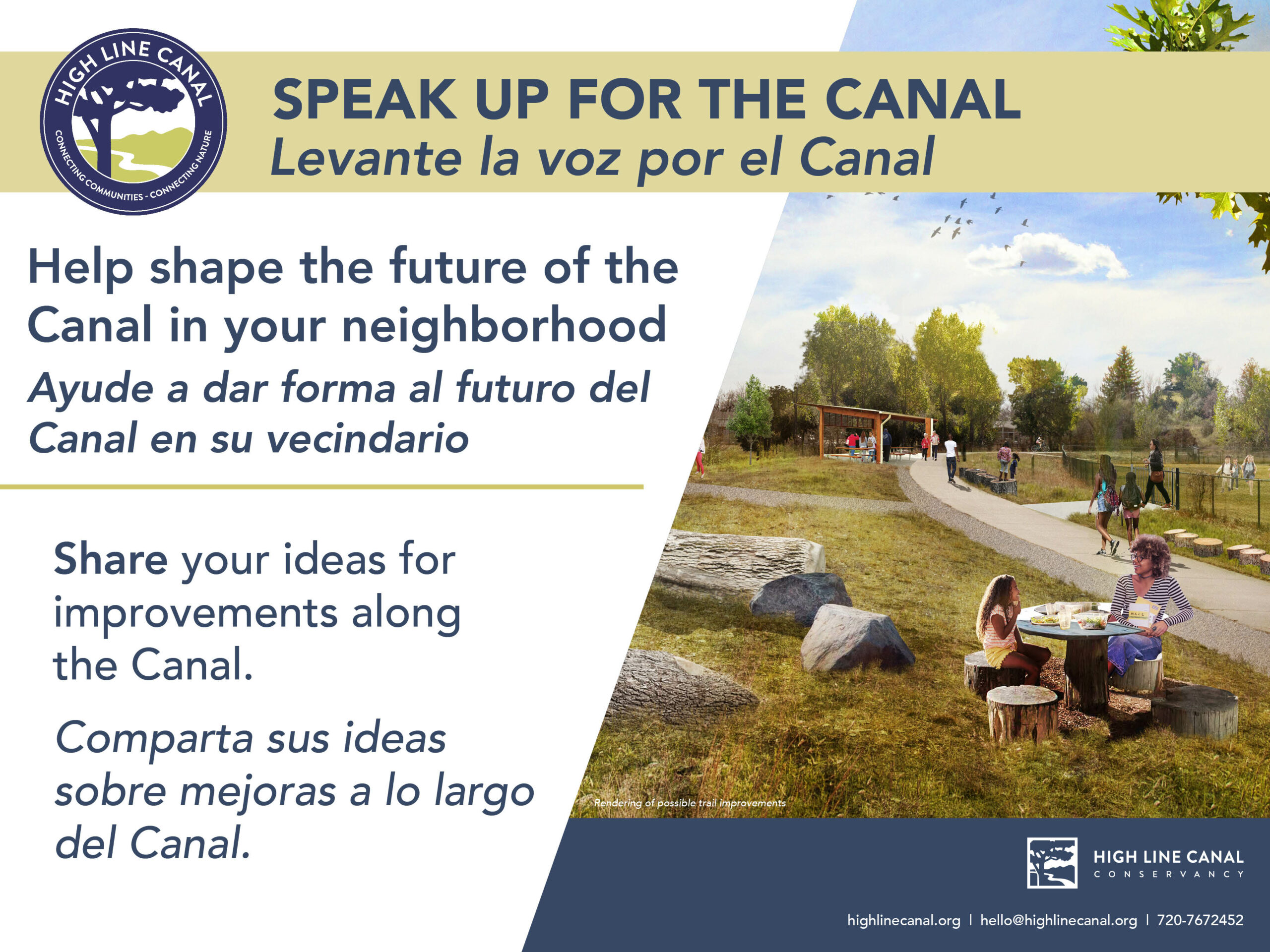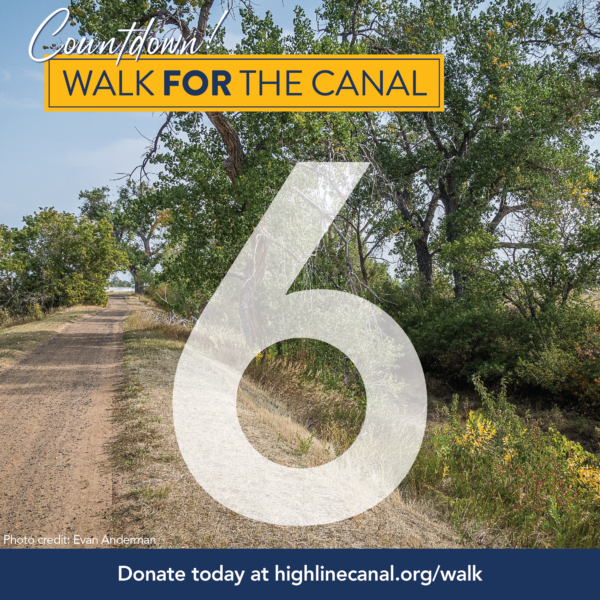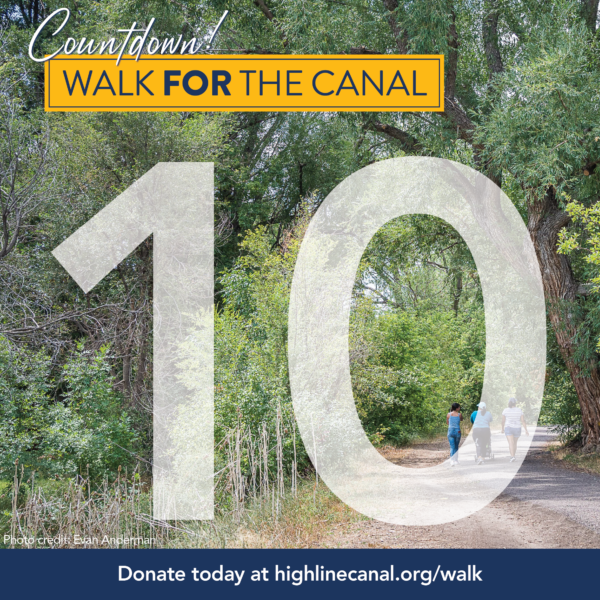The following blog post has been contributed by Shannon Bauman from the High Line Canal Conservancy.
You may know the High Line Canal as a 71-mile playground for runners, walkers, cyclists and other recreationalists. Or perhaps the Canal stands out as a nearly 140-year-old living tribute to Colorado’s rich agricultural history. However, with the recent completion of the High Line Canal 2018 Botanical Survey, the Canal’s role as a key ecological asset is stepping into the spotlight.
This survey was made possible with funding from the Laura Jane Musser Fund and the tireless work of Christina Alba (PhD Assistant Research Scientist), botanists and volunteers from the Denver Botanic Gardens. Together, they dedicated 57 days and over 850 hours in the field.
Below is a summary of key concepts and take-aways from the report.
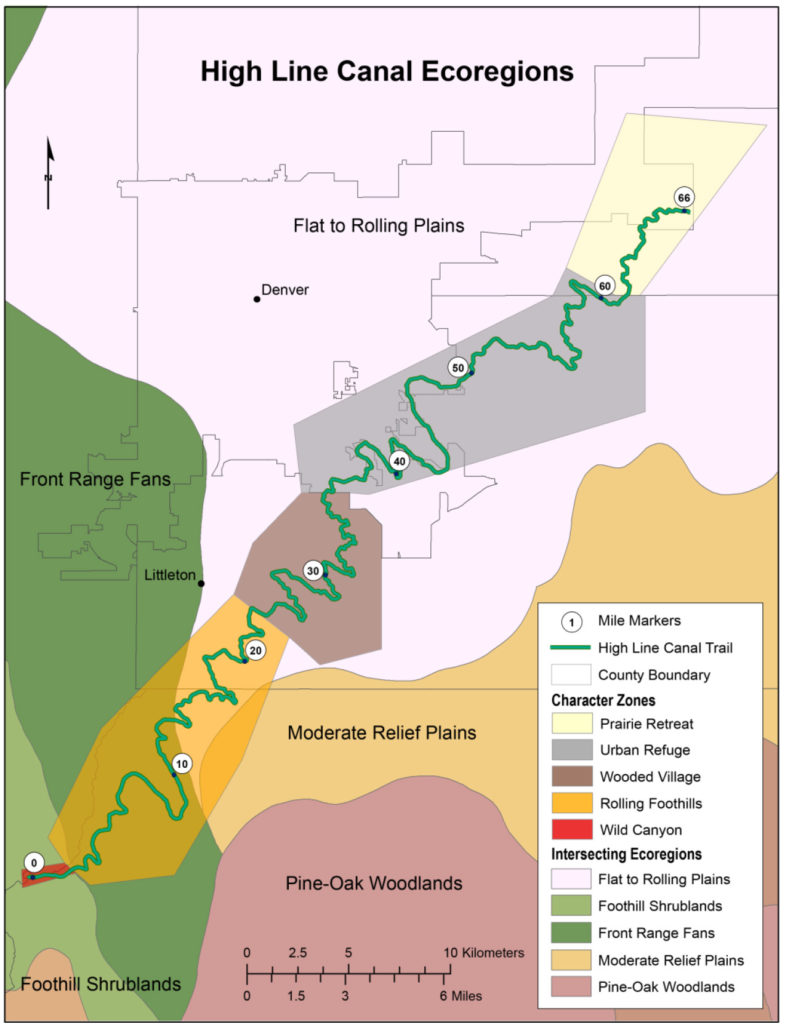
Prepared for the High Line Canal Conservancy by Denver Botanic Gardens
Ecoregions
The Canal spans three distinct “Ecoregions”, which are geographic areas with similar characteristics and vegetation types. These are: 1) Foothill Shrublands, 2) Front Range Fans and 3) Flat to Rolling Plains. The Foothill Shrublands Ecoregion lies within the highest elevation range (6,000-8,500 feet) and supports the coolest and wettest climate of the three Ecoregions. The Front Range Fans Ecoregion (4,800-5,300 feet elevation) contains low hills and is slightly cooler than the Flat to Rolling Plains Ecoregion (3,600-5,700 feet elevation), although both foster shortgrass and mixed grass prairies.
The Canal is also defined by five Character Zones (see map). The Wild Canyon Character Zone significantly serves as the only zone located in the Foothill Shrublands Ecoregion. Although, the Rolling Foothills Character Zone acts as an important transition area between the Front Range Fans and the Flat to Rolling Plains Ecoregions. (This latter Ecoregion covers the rest of the Canal.) In general, the outermost areas of the Canal (Wild Canyon, part of Rolling Foothills and Prairie Retreat Character Zones) have higher vegetation cover and lower land use intensity.
Biodiversity and Species Richness
Because parts of the Canal weave through highly developed areas, biodiversity is important in protecting against disturbances. Biodiverse ecosystems contain species that provide a range of services, such as legumes that fix nitrogen and flashy flowers that attract pollinators, as well as repeated services to buffer against species loss.
Species richness is the number of species that occur in a given area and is a key measure of biodiversity (see table below). A total of 438 plant species can be found on the Canal – 16% of species that occur across the entire state! The most species rich families include Poaceae (grasses, 75 species) and Asteraceae (asters and flowers, 67 species).
The Rolling Foothills and the Urban Refuge Character Zones are the most species rich, although, for its length (<2 miles), the Wild Canyon Zone harbors a surprising number of species (see table below). Two species of ecological interest – the blue ridge carrion-flower and wishbone fiddleleaf – were found in this zone and are known to only 7 counties in Colorado.
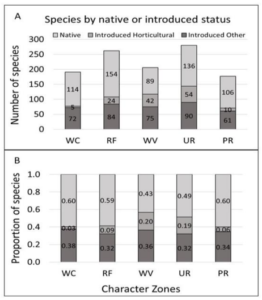
The number (panel A) and proportion (panel B) of native and introduced species occurring in each Character Zone. WC = Wild Canyon; RF = Rolling Foothills; WV = Wooded Village; UR = Urban Refuge; PR = Prairie Retreat.
Native, Non-Native, and Cultivated Species
The plants collected were identified as native, non-native (or introduced) and cultivated species.
According to the USDA, a native plant is a “plant that is a part of the balance of nature that has developed over hundreds or thousands of years in a particular region or ecosystem.” And a non-native plant is a “plant introduced with human help (intentionally or accidentally) to a new place or new type of habitat where it was not previously found.”
The study also identifies cultivated species that occurs when garden or landscaping plants escape from their enclosures into nearby natural areas, which seems to be pressuring the Canal. These species are most prevalent along the Canal’s edges and include the European spindletree and Tatarian honeysuckle.
Managing for introduced species is important, but the Canal’s diversion from its historic conditions does not mean it’s a useless resource. In fact, it provides essential habitat in an otherwise urban jungle. To protect sensitive native species on the Canal, several more resilient natives were identified and prioritized through the Coefficient of Conservatism (which measures species’ tolerance to disturbances). These plants, including the American plum and later goldenrod, can tolerate a wide range of conditions but also require some degree of naturalness that also benefits the more sensitive native species.
Moving Forward
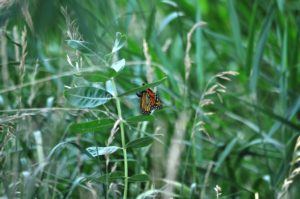
Monarch on the High Line Canal
Not only does this survey serve as the first ever in-depth botanical inventory of the Canal, but it provides a baseline for managers and planners to maintain the ecological integrity of the Canal over time. In the future, the Conservancy will publish a Natural Resources Management Plan that will outline vegetation, habitat and other guidelines in part guided by the findings from this survey.
Does this eco-exploration get you excited? The Conservancy, in partnership with the Denver Botanic Gardens, is hosting a series of Bioblitzes this summer to collect more data about the Canal. In addition, in partnership with VOC, three events to remove noxious weeds are scheduled in Aurora starting July 16th. Visit our events calendar to learn more!




